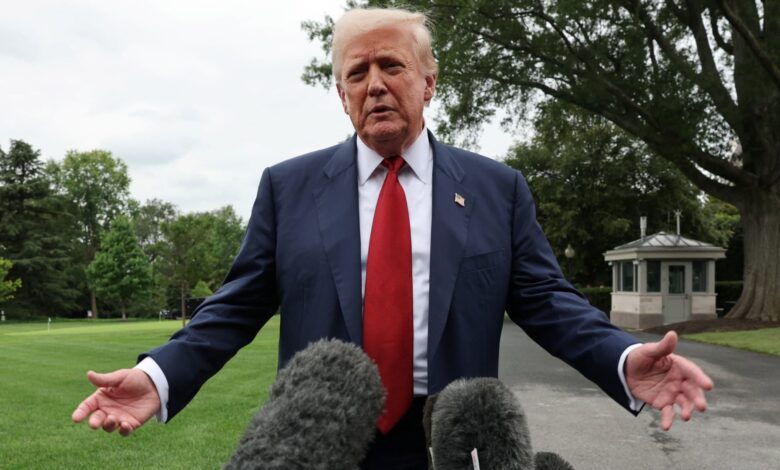Trump’s ‘reciprocal’ tariffs come into effect, hitting dozens of U.S. trading partners

U.S. President Donald Trump speaks to reporters ahed of boarding Marine One to depart for New Jersey, at the White House in Washington, D.C., U.S., August 1, 2025.
Jonathan Ernst | Reuters
U.S. President Donald Trump’s so-called “reciprocal” tariffs took effect on Thursday, imposing higher duties on many of the country’s trading partners’ exports to the U.S.
“IT’S MIDNIGHT!!! BILLIONS OF DOLLARS IN TARIFFS ARE NOW FLOWING INTO THE UNITED STATES OF AMERICA!” Trump wrote on social media platform Truth Social.
In an earlier post Trump had said the tariffs were targeting “COUNTRIES THAT HAVE TAKEN ADVANTAGE OF THE UNITED STATES FOR MANY YEARS.”

Trump last week — ahead of his Aug. 1 tariffs deadline — rejigged the tariff rates and pushed back the deadline to Aug. 7.
Some of the steepest duties include Syria’s 41%, and Laos and Myanmar’s 40% rate, while Switzerland — after being unsuccessful in a last-minute scramble for a deal — is facing 39% tariffs.
Swiss negotiators this week travelled to Washington D.C. for talks after the country’s higher rate came as a surprise to many, but so far, no deal appears to have been agreed. An update is expected from the Swiss government later on Thursday.

Separately, Brazil and India are both now facing duties of 50%. While Brazil’s tariffs appear to have kicked in, India’s rate is at 25% for now, and will rise to 50% later this month, according to an executive order signed Wednesday. Trump said his tariffs on India are related to its current purchases of Russian oil.
Other countries and regions, meanwhile, have been able to strike trade agreements with the U.S. This includes the European Union, Japan and South Korea — which all now face 15% tariffs — as well as the U.K., which negotiated a 10% rate.
Others, including China and Mexico, remain in limbo. China is engaged in something of a trade truce with the U.S. for now, while previously announced rates for Mexico are on pause.




